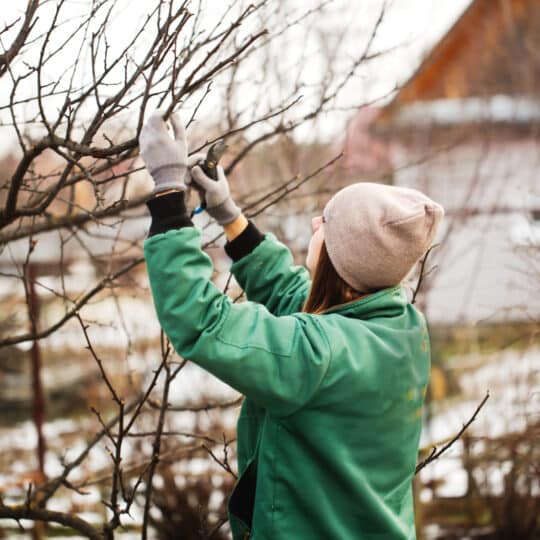Which Trees and Shrubs to Prune this Winter
How, Why, and When
Posted
February 20, 2025

It may be the middle of winter, but it’s never too early to start thinking about spring. In fact, late winter is the right time for pruning many trees and shrubs to prepare them for the growing season. Learn which plants should be trimmed, why winter is best, and how to prune properly.
Why Winter is Ideal for Pruning Trees and Shrubs
It’s no secret that many plants go dormant in the cold. They take this time to conserve their energy for growing once the weather warms. Without any leaves or flowers in the way, it makes it easier to restructure the plant for optimal growth. You can also see which branches look broken, dead, diseased, or are crossing each other. Removing these weaker branches helps prevent potential hazards and strengthens the plant. When you prune right before the plant wakes up, it can put more energy into producing new, healthy leaves, flowers, and fruit.
However, not all trees and shrubs should be pruned in winter. The key question to ask is when does the plant bloom? Anything that flowers in the spring should be pruned after the blooms fade to prevent trimming new buds. Anything that flowers in the summer can be pruned in late winter or early spring since it’s less likely to have new buds yet.
What Plants to Prune Now
Prune the following trees shrubs in late winter or early spring that flower buds on new wood in the summer:
- Deciduous trees and shrubs
- Fruit trees
- Evergreen shrubs
- Summer-flowering shrubs
Anything that blooms in the spring on old wood should be pruned in late spring or early summer once the flowers have faded.
Pruning Tips
Before you head outside with the pruning shears, keep these tips in mind:
- Sharpen the pruning blades for a clean cut.
- Use the right tool for the diameter and height of the branch you want to cut.
- Prune on a mild, dry day to prevent the spread of water-borne disease and damage from the cold.
- Avoid pruning too early in the winter, as incisions can dry out and new growth may still get hit with frost.
- If you see a new bud, it’s probably not time to prune this particular plant.
- If the tree is too tall to prune without getting on a ladder, it’s best to call a professional.
Once you’re ready to prune, here are some additional recommendations:
- Remove any dead and diseased branches first. If you feel like you’re removing too many, you may want to consult a professional for other options.
- Cut lower branches on evergreen shrubs and trees.
- Removing overgrown and smaller branches helps increase light and air circulation at the tree’s crown.
- Keep the branches that develop or maintain the tree’s structure.
- Cut any branches at the node—the point at which one branch or twig attaches to another.
The pruning process is very important to help maintain a plant’s structure and health. If you want to ensure you’re cutting the right branches at the right time, call Cardinal Lawns for a consultation. We can also help strengthen the root system of your trees and shrubs with properly timed fertilizer applications and disease and pest control options.

Download Your FREE Summer Plant Care Guide
Help your plants make it through a hot & dry summer looking like a million bucks with our summer plant watering and maintenance guide!